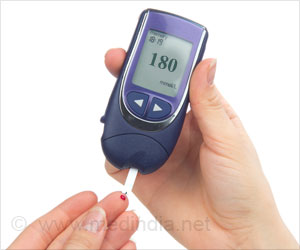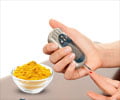Type 1 diabetics must receive insulin throughout the day. Artificial pancreas has an insulin pump and glucose monitor that helps manage blood glucose levels.

- Artificial pancreas is an automated method to deliver insulin to individuals with Type 1 diabetes.
- The wearable artificial pancreas uses two available diabetes devices--an insulin pump and a continuous glucose monitor, which senses blood sugar levels on an ongoing basis.
- The smart device was found to be effective in managing blood glucose levels compared to the insulin pump.
"Even with an insulin pump, it can be difficult to know how much insulin the child requires because of fluctuations in the carbohydrate content in food and the child's activity level."
"Our study data show, for the first time, that among young children, 5 to 8 years old, this artificial pancreas maintains blood sugars in the target range better than the usual home regimen."
A Note on Type 1 Diabetes
The wearable artificial pancreas uses two available diabetes devices--an insulin pump and a continuous glucose monitor, which senses blood sugar levels on an ongoing basis. Although these devices typically do not "talk" to each other, the experimental system connects the devices using sophisticated computer algorithms, DeBoer explained.
"With the exception of insulin dosing for food intake, artificial pancreas makes all the dosing decisions," he said. "It can track the patient's blood sugar level and adjust the amount of insulin given to keep the blood sugar in a target range."
No Episodes of Low Blood Glucose
DeBoer and his colleagues tested the artificial pancreas for 68 hours in six boys and six girls with type 1 diabetes whose age ranged from 5 to 8. The researchers also tracked the children's blood sugar control using their usual home care regimen for 68 hours.
All children normally used an insulin pump plus continuous glucose monitoring. In comparing blood sugar levels, the researchers adjusted the levels for the amount of activity each child had.
- Children had a longer time in the target blood sugar range, which was 70 to 180 mg/dL: on average, 73 percent of the time versus 47 percent with their usual home care.
- They also had far less time with high blood sugar levels (above 180 mg/dL): 25.8 percent of the time compared with 51.5 percent with usual home care.
- There was no increase in episodes of low blood sugar, with an average of only 3.3 low blood sugar episodes with the artificial pancreas and four such episodes with usual home care.
Reference
- Mark DeBoer et al., Artificial pancreas improves blood sugar control in young kids, ENDO 2017: The Endocrine Society's 99th Annual Meeting & Expo.
Source-Medindia















